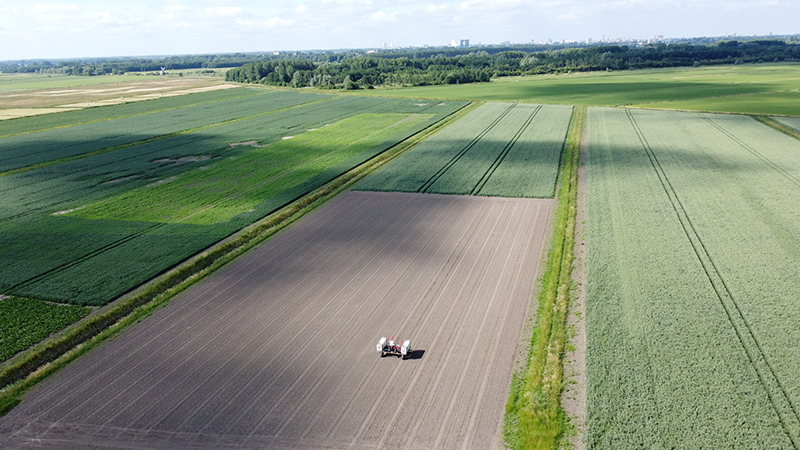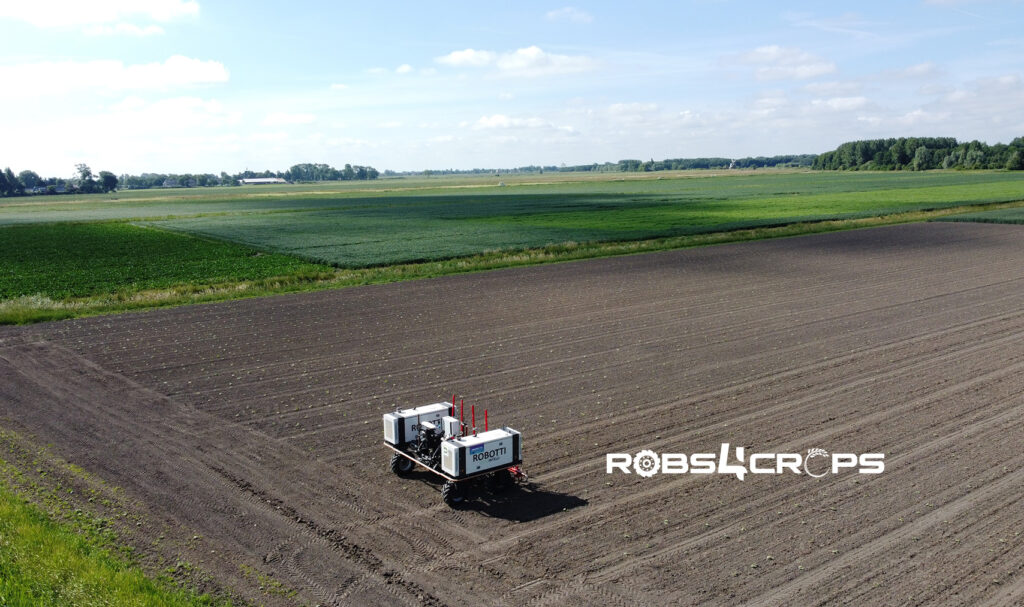In the pilot in The Netherlands, the aim is to reduce the environmental impact of arable farming by replacing chemical weed control with unsupervised mechanical weeding. Sugar beets and pumpkins are both crops that grow slowly at first and therefore need several weeding passes to control the weeds during the crop growth season. This is where the pilot in the Netherlands steps in, exploiting the full potential of robotics and technology.
Can you describe the specific technology being used in your pilot?
The Large-Scale Pilot in the Netherlands is using the Robotti robot, which was developed for arable farming operations, in combination with a precision seeder and a smart hoeing machine. The precision seeder makes sure that the seeds are in the right location in the soil. The hoeing machine is equipped with a camera which recognises the crop row, afterwards he sideshifts the hoeing machine to the right spot. The new technology that is actually built on the Robotti monitors the quality of hoeing/weeding. The technology is still being developed. In 2022 we have collected some data and have checked the right location of the cameras. Before the season in 2022, we have done some tests with the cameras and some fake plant on the concrete. During the season 2023 we want to monitor the quality and send a stop message to the autonomous vehicle.

What challenges have you faced in implementing and adapting these technologies in your pilot's operations? And how did you overcome them?
In the first year, we had to connect the Robotti and the seeder together. The seeder needs some signals from the Robotti, and it must fit between the Robotti units. We had to send the right RTK signal to the Kverneland Terminal to let the seeding machine do its job. The seeding machine needs some mechanical adjustment to fit between the Robotti units. Both were fixed before the start of the season.
In 2022, we had to connect the Robotti and the camera steered weeder together. To connect those technologies was challenging, but after fine tuning and adjustments, we managed to do it.
The new technology we use is really exciting – we’re using monitoring technology to collect data and create a stop signal for our Robotti. The controlling systems need to be able to communicate with the autonomous vehicle, and after a bad weeding, the computer sends a stop signal to the vehicle.
How does this technology compare to traditional methods of farming in terms of cost, precision, and sustainability?
The technology we are using in 2023 is new and will help farmers using autonomous weeding machines for hoeing their crop. Normally, a human controls the quality, but in this case the system will control the quality. The system is not related to the price, but it can save a lot of labour costs and can work 24/7 through the fields. The idea is to connect the system on all different hoeing machines, so it is easy to use on different robotic systems.

